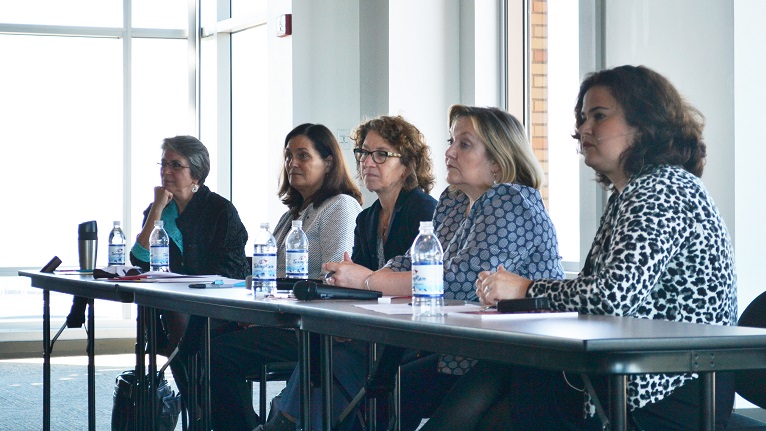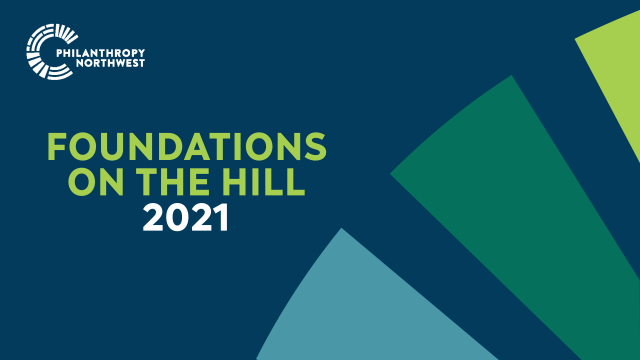
Sheila Babb Anderson, Campion Foundation & Remy Trupin, Catalyst Fellow
As public policy and political nerds, we find it shocking when nonprofits and foundation leaders resist engaging in public policy work. Fighting against our optimistic Schoolhouse Rock! view of the possible, however, is the nasty messiness that seems to prevail in the political realm.
This polarized climate understandably turns people off — but to solve many of the challenges we’re working on, government must be part of the solution. And for government to change laws and enact policies, we need engagement and visible support from nonprofits working on these issues. When weighing a proposal, a skeptical policymaker will wonder why leaders of organizations responsible for a related mission are sitting on the sidelines.
Nonprofit board members are influential members of the community — that’s why they’re on the board in the first place! — with diverse views, backgrounds and networks. They are a critical piece of this changemaking puzzle. In 2015, BoardSource published a new set of expectations regarding a nonprofit board’s role in advocacy in the latest edition of its iconic resource: Ten Basic Responsibilities of Nonprofit Boards. On May 9, nonprofit leaders, educators and consultants joined BoardSource, Campion Foundation and Philanthropy Northwest for a conversation about this elevated responsiblity.

Standing for Our Missions
Over the course of 35 years in nonprofit fundraising, Sonya Campion had seen very little board-led advocacy work. In trying to inspire this activity going forward, she discussed some of the mistaken assumptions made in early iterations of Campion Foundation's board advocacy project:
- Myth 1: All boards needed were tools. While they do need tools, more importantly, they need to know how public policies are helping or hurting their mission.
- Myth 2: The need for advocacy would be self-evident. All sorts of structural and systemic pushback exists, including confusion around what advocacy is and the perception that it is inappropriate for nonprofits to engage in advocacy.
- Myth 3: Executives wouldn’t need convincing. In fact, executive directors were resistant to incorporating advocacy, often because mistaken assumptions about how much it would affect their workload. Executives are protective of the board’s time — and often want them to focus on fundraising and governance instead. Reframing clearly how advocacy is an integral to board responsibilities was needed.
At the heart of the challenge is a culture — hardly unique to the nonprofit sector — with a high degree of discomfort, disinformation and disengagement related to the political realm. BoardSource, Campion Foundation and Philanthropy Northwest are developing resources and strategies to start the conversations about how advocacy can advance our missions and get over the taboo of talking about advocacy as if it’s the same thing as lobbying.
Our Public Policy Ecosystem
Government relies on nonprofits to deliver services, shape public policy and relay valuable information on how programs and policies are impacting people on the ground. The nonprofit sector can't treat advocacy as an optional activity; it's becoming a mainstream best practice.
“For most organizations, there is a public policy ecosystem you operate in," said Anne Wallestad, BoardSource CEO. "If you ignore it, you won’t be successful."
The newly published 3rd Edition of Ten Basic Responsibilities of Nonprofit Boards now explicitly mandates that board members engage in advocacy. The first responsibility for board members now states “Determine mission and purposes and advocate for them," and advocacy is woven throughout many of the other responsibilities. As ambassadors for their organizations, boards must “stand for the mission” by informing policymakers about the impact of decisions on their communities.
Acknowledging the nervousness of boards, the guide notes that “while lobbying is advocacy, not all advocacy is politicking" and explains a multitude of ways to reinforce an organization’s mission through advocacy.
Resources and Ideas to Consider
In addition to Ten Basic Responsibilities of Nonprofit Boards, we recommend these resources:
- Stand for Your Mission: Includes a discussion guide for boards, success stories and grantmaker resources.
- Alliance for Justice, Bolder Advocacy initiative: Legal guidance, advocacy tools and technical assistance for nonprofits and grantmakers.
- PolicyWorks for Philanthropy: A project of the Forum of Regional Associations of Grantmakers committed to individual, collaborative and collective policy work at local, state and federal levels.
- Philanthropy and the Renewal of Democracy: Is it Time to Step Up Our Game? A 2014 monograph by Daniel Kemmis, former Philanthropy Northwest board member and mayor of Missoula, Montana. (Daniel Kemmis, Kettering Foundation and Philanthropy Northwest are working on a 2016 edition.)
To effectively embrace advocacy, philanthropy needs to think about how to support advocacy as part of the grantmaking process. Consider starting a conversation with your grantees about advocacy. Fund general operating support; don’t put overly restrictive language in your contracts.
These activities may require additional staff resources. What are some good models for smaller nonprofits? How can advocacy be sustained as a core activity and not just a “one-off” connected to a project grant related to a specific policy?
Finally, how much focus should be on civic education? Philanthropy can think about exerting their influence on policy schools to ensure they incorporate advocacy into their curriculum.
Sheila Babb Anderson is Campion Advocacy Fund's homelessness prgoram director. Remy Trupin is a Philanthropy Northwest Catalyst Fellow, focused on advocacy.


